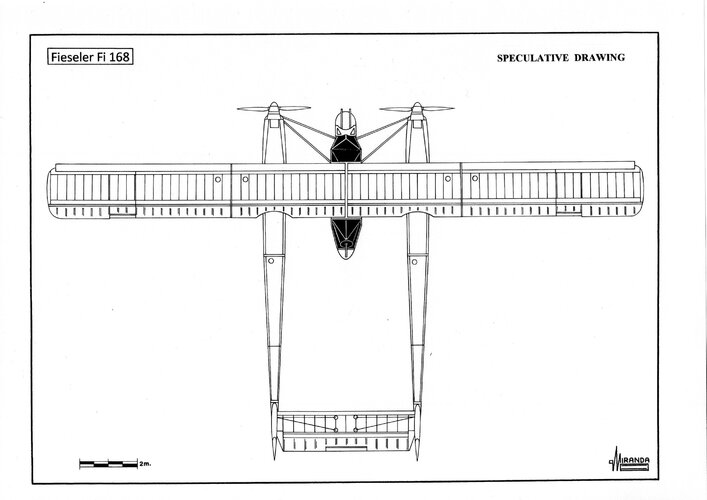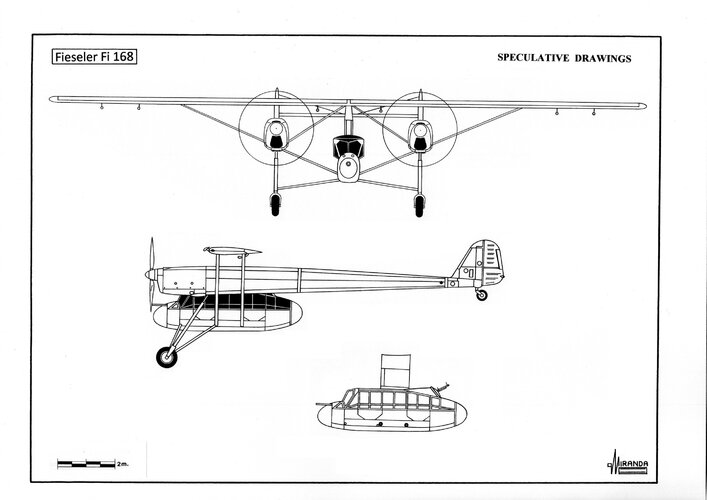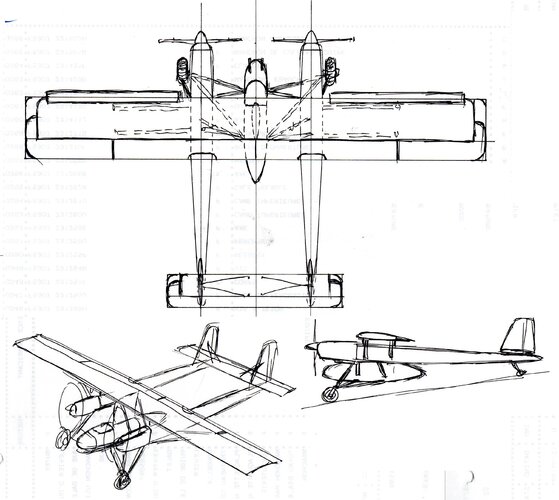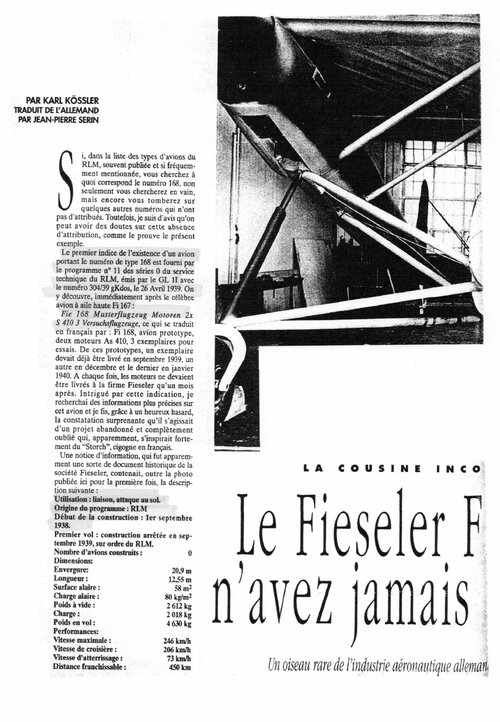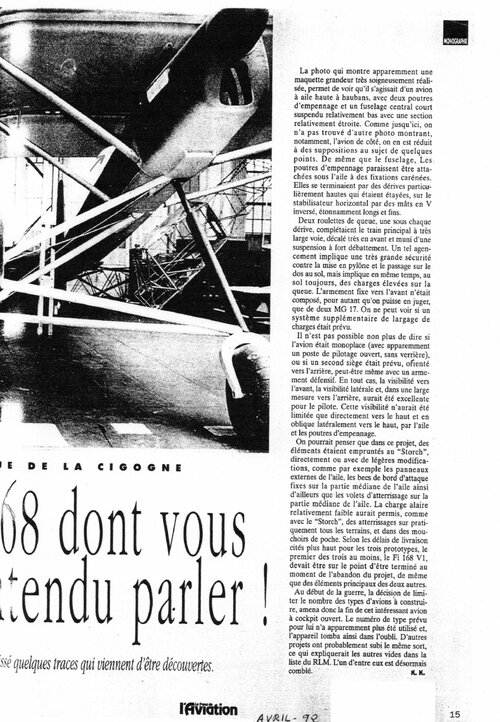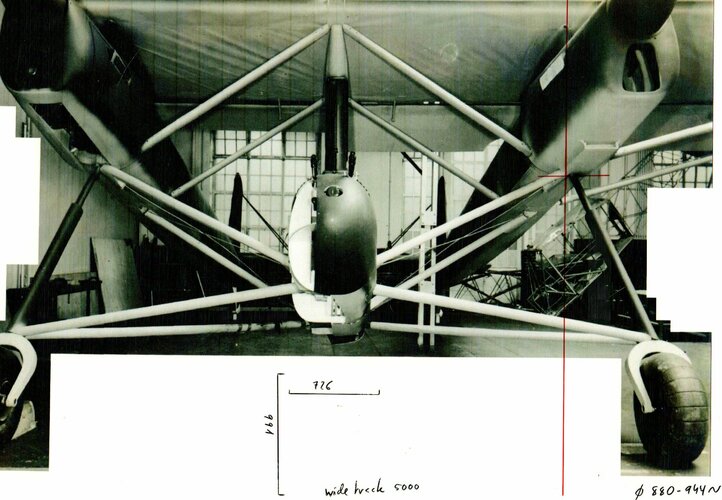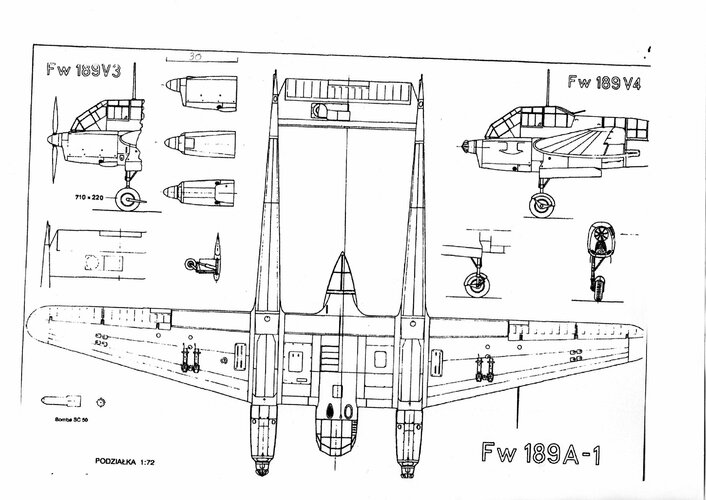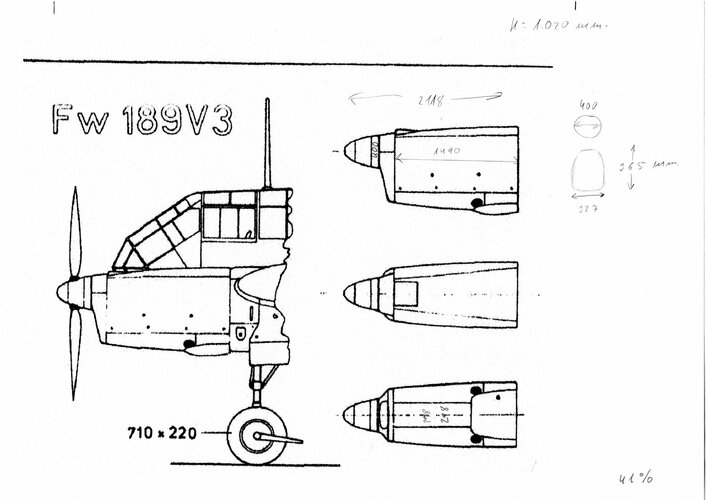You are using an out of date browser. It may not display this or other websites correctly.
You should upgrade or use an alternative browser.
You should upgrade or use an alternative browser.
Fieseler Fi 168
- Thread starter Justo Miranda
- Start date
richard B
ACCESS: Secret
- Joined
- 17 August 2006
- Messages
- 334
- Reaction score
- 459
See #14 too ...
https://www.secretprojects.co.uk/threads/various-dfs-projects.17130/
I have a third 3-views by P.Brand , with a wing of similar shape , but bigger , to the Storch's one .
https://www.secretprojects.co.uk/threads/various-dfs-projects.17130/
I have a third 3-views by P.Brand , with a wing of similar shape , but bigger , to the Storch's one .
Tonton-42
ACCESS: Secret
- Joined
- 10 May 2014
- Messages
- 272
- Reaction score
- 468
I don't know if I'm right but I think the horizontal stabilizer is larger than between the axels of twin booms as the P-38 ... For me it seems that we could think it with watching the picture ... It was (it seems !) my opinion when I drew my (not very pretty  ) upper view of the Fi-168 ... Another thing : the wing aera is 58 m² with 20.9 m wing span, that gives a wing aspect ratio of 7.53, and it is very less elegant that Justo propose !.. But I think Justo has a very good raison for taking this hypothese ?
) upper view of the Fi-168 ... Another thing : the wing aera is 58 m² with 20.9 m wing span, that gives a wing aspect ratio of 7.53, and it is very less elegant that Justo propose !.. But I think Justo has a very good raison for taking this hypothese ?

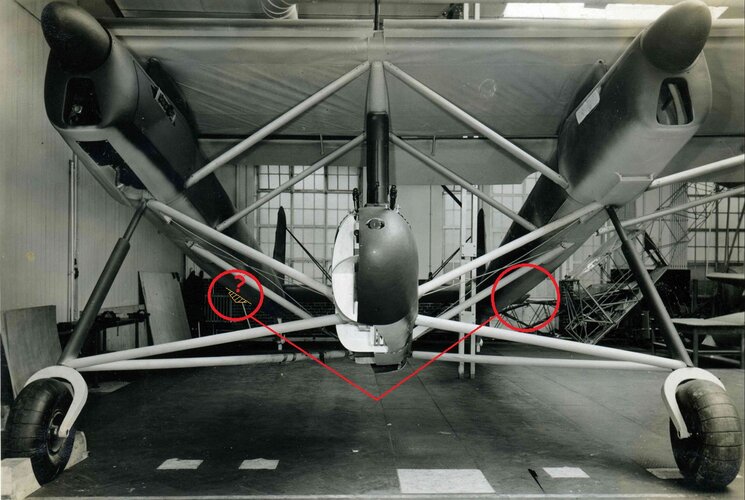
In April 1937, the RLM issued the Schlachtflugzeug specification calling for an armored ground attack aircraft powered by two engines rated at 450-550 hp. each.I don't know if I'm right but I think the horizontal stabilizer is larger than between the axels of twin booms as the P-38 ... For me it seems that we could think it with watching the picture ... It was (it seems !) my opinion when I drew my (not very pretty) upper view of the Fi-168 ... Another thing : the wing aera is 58 m² with 20.9 m wing span, that gives a wing aspect ratio of 7.53, and it is very less elegant that Justo propose !.. But I think Justo has a very good raison for taking this hypothese ?
View attachment 697883
Focke-Wulf proposed an extensively modified version of the Fw 189 prototype D-OPVN fitted with armored cockpit.
Blohm und Voss proposed the Bv P 40, the ground attack version of the Bv 141 powered by one DB 600 engine.
Henschel proposed the “winged can-opener” Hs 129, with such heavy armour that it considerably affected its manoeuvrability and take-off run.
The Hs 129 was the winner of the Schlachtflugzeug competition but the Technische Amt recommended the replacement of Argus engines with more powerful ones of French manufacture.
Two revolutionary STOL designs were also submitted to the Schlachtflugzeug contest: the Fieseler Fi 168 and the Junkers EF 50.
Wings fitted with slats and flaps provides the best solution for STOL flight.
The Fi 168 Panzerjäger was a ground attack version of the Fieseler Storch powered by two Argus As 410 engines.
Construction of the prototype began on September 1, 1938 and the mock-up was inspected by RLM technicians in April 1939.
Following the choice of the Hs 129 for mass production the project was cancelled in September 1939.
When I tried to calculate the dimensions based on the size of the engines I understood that in the construction of the mock-up they had used the engines of the Fw 189 V3. In my opinion Fieseler intended to use the fuselage booms of the Fw 189 and the wings and cockpit of the Storch that were already in production.
Fieseler Fi 168 technical data
Type: two-seat tank destroyer, wingspan: 20.9 m, length: 12.55 m, height: 3.6 m, wing area: 58 sq. m, max weight: 4,630 kg, max speed: 246 km/h, range: 450 km, power plant: two Argus As 410, 12 cylinder, inverted-vee, air-cooled engines , each rated at 465 hp, proposed armament: two nose mounted 20-mm MG FF/M cannons, two nose mounted 7.9-mm MG 17 machine guns and one 7.9-mm MG 15 rear firing machine gun.
Attachments
Sorry for the confusion this is a typo
Tonton-42
ACCESS: Secret
- Joined
- 10 May 2014
- Messages
- 272
- Reaction score
- 468
From the site of Richard Ferrière ... The wing area of Fi-168 was 58 m² vs 38 for the FW-189, increasing it of almost 53% ... of course if the informations are right ! Subsequentely the surfaces of rudder and horizontal stabilizers must have been increased in proportion, because the length of the FW-189 was 11,90 m, only less 0,65 m than Fi-168.Hello. Anyway, the rudders are at least 2x higher than those on the Fw189...
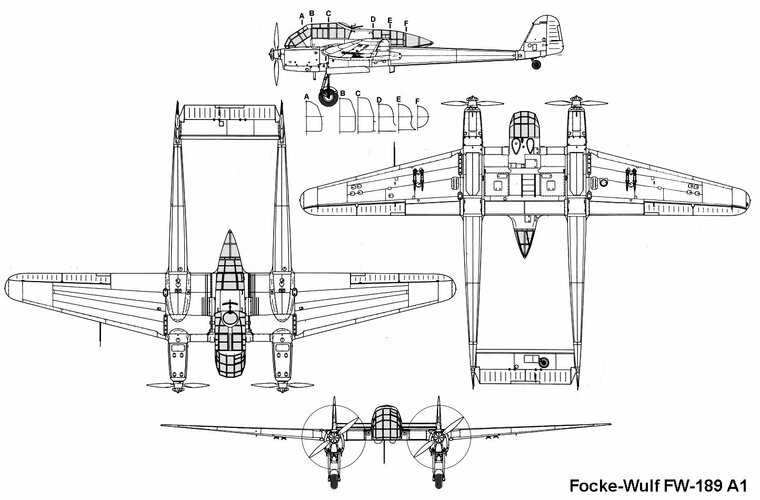
foiling
ACCESS: Secret
- Joined
- 12 August 2007
- Messages
- 365
- Reaction score
- 126
Superb.Fieseler Fi 168

